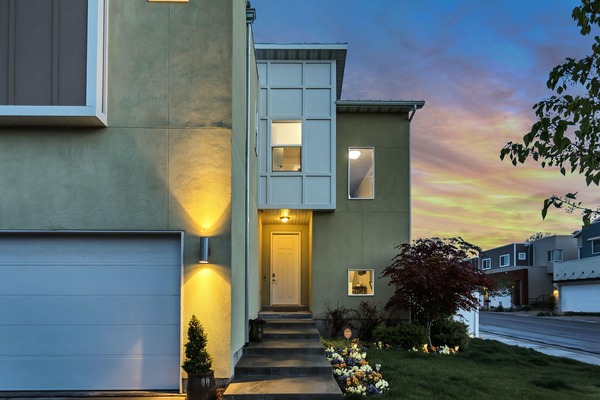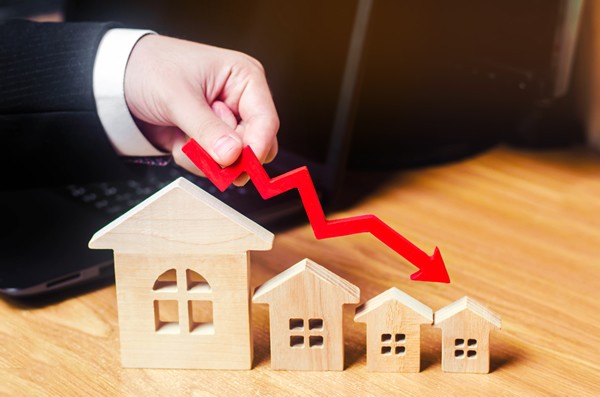Rightmove’s Most-Viewed Properties Are Not Your Ordinary Homes
Time spent in lockdown has forced much of the British public to rethink their priorities; this has meant setting their sights on more spacious properties to allow them to work, play, and generally spend more time enjoying the homes they live in.
It seems a year and a half with life more or less “on hold” has not put a dampener on the dreams of many who want to own a home in the UK. When taking a look at the top-viewed properties on Rightmove, it is an extremely ambitious list, to say the least.
“We’ve seen the busiest ever first half of a year in 2021, and while much has changed in the housing market, the nation’s obsession with property and searching for their dream home has stayed the same,” said Tim Bannister, director of property data at Rightmove.
“From vast open views over Lake Windermere to an Essex mansion complete with a private gym and equestrian centre, it’s clear the luxury end of the market is still piquing the nation’s interest.”
You would expect the most-viewed properties in Rightmove’s listings to be homes those viewing them can afford to buy; things seem to have headed the opposite way as of late. Unless you have between £2.5 million and £30 million burning a hole in your back pocket, Rightmove’s top-viewed properties simply will not fit in your price range!
Here is a quick overview of the properties on Rightmove that are getting the most attention from the British public right now:
- Five-bedroom waterfront property, Lake Windermere, £2.4m: First up, this year’s most heavily drooled-over property so far is a fantastic Lake District pile with five bedrooms and an asking price of £2.4 million. It boasts some of the most fantastic views on all sides and even has its own slipway, opening the door to a world of fun on the water. After all, anyone able to afford a home like this can probably afford a decent handful of water toys, too.
- Five-bedroom mansion, Essex, £15m: Stepping things up significantly price-wise, this is a five-bedroom house situated on its own premium plot of 52 acres of private land. The fabulously traditional exterior masks a super modern 10-car underground car park, complete with its own electric lift and turntable for easy access. Not to mention a swimming pool, a jacuzzi, and all the usual refinements.
- Five-bedroom mansion, Cornwall, £2.5m: Anyone setting their sights on the southwest should definitely consider this idyllic Cornish property, which boasts breathtaking views over Restronguet Creek. With its five bedrooms and £2.5 million price tag, it is the first time this particular property has ever been put up for sale publicly.
- Ten-bedroom mansion, Surrey, £30m: If five bedrooms simply won’t cut it, why not pick up the most expensive home currently listed on Rightmove? For the modest price of just £30 million, you can bag yourself a Surrey estate with 10 bedrooms, an indoor swimming pool, and pretty much everything else you could ever wish for.
- Ten-bedroom mansion, Devon, £5.95m: There is another 10-bedroom dream estate listed on Rightmove with an asking price of a meagre £5.95 million. If you have ever dreamed of living in a home with an interior not dissimilar to that of Downton Abbey, now is your chance. Only if you’ve got the cash to cough up for such an idyllic pad!
Broker Confidence Improves as Consumer Confidence Returns
New figures suggest that the vast majority of brokers are optimistic about what the next 12 months are going to bring for their businesses. According to the latest data published by Masthaven Bank, more than 90% of brokers are confident about the year ahead.
This represents an increase of 3% from the previous 87% Masthaven reported in its Broker Beat survey.
The survey took into account the views of 186 brokers, among whom 77% predicted an increase in overall sales and revenues for their businesses this year. Furthermore, a full 42% said they expected to achieve double-figure growth over the next 12 months.
Conversely, just 3% said that they expect to see a decline in sales during the same period of time.
An optimistic outlook for the property market
Asked for their views on the immediate outlook for the real estate sector, 88% of the brokers polled said that they were either “confident” or “very confident” about its future. At the end of last year, a significantly lower 71% expressed optimism for the property market’s future prospects.
Masthaven said that the growing optimism among brokers reflects the UK’s gradual return to normality and a general increase in consumer confidence.
Economic uncertainty
Asked about the specific challenges their businesses are currently facing, 26% of brokers cited lingering economic uncertainty as their biggest current cause for concern, though this indicates an improvement since the end of last year.
Lenders’ service levels were also highlighted as a concern by 25% of brokers, while a further 16% said the prospect of future lockdowns represented a threat to their businesses.
A quarter of brokers are concerned about lenders’ service levels, while 16% believe the biggest problem they face is further local or national lockdowns due to COVID-19.
Speaking on behalf of Masthaven, director of intermediaries Rob Barnard paid tribute to the efforts of the sector to help movers and first-time buyers over the course of the past 18 months.
“The industry has worked tirelessly to support homebuyers since the start of the pandemic,” he said.
“This hard work, combined with pent-up demand from early 2020 and government support in the form of the stamp duty holiday, has resulted in a booming property market, but there are still challenges on the horizon.”
“The government’s various COVID support initiatives will be coming to an end soon, with the furlough scheme expected to wind down in September.”
“The withdrawal of this support will undoubtedly be felt by some borrowers.”
Preparing for new challenges to come
Mr. Barnard also emphasised the importance of brokers continuing to work as closely as possible with clients over the coming months, due to the potential for additional challenges to affect prospective borrowers.
“As the market enters this next phase, brokers and lenders alike will need to work together closely to support all customers, but particularly those who have been heavily affected by the pandemic,” he said.
“Innovation and collaboration will be key in ensuring the industry continues to provide products tailored to customers’ needs.”
Investors Set Sights on the North, Driven by Major Market Shift
The UK’s real estate market has seen a number of seismic changes during the course of the COVID-19 pandemic. One of which has been a complete change in priorities for millions of workers, who have found themselves either entitled or obligated to work from home.
According to recent data published by A-Plan Insurance, 90% of the UK’s top areas for house price growth over the past 10 years were in London.
Waltham Forest saw the strongest growth since 2011 at a staggering 126%, followed by Hackney at 105% and Dagenham at 96%. Greenwich, Bexley, and Newham were also ranked within the top 10 hotspots.
But what’s interesting is that while house prices remained disproportionately high in most areas of London, investors are increasingly setting their sights on potential future hotspots. Of which, many are further north.
Dale Anderson, managing director of Fabrik Invest, explains:
“Looking ahead ten years, it’s easy to imagine that nine out of the next ten property hotspots will be in the North. We’ve seen a huge shift in investor interest from south to north in recent years. That’s because northern cities are delivering greater potential for capital growth, better yields, and strong, sustained tenant demand,” explained the managing director of Fabrik Invest, Dale Anderson.
A new market front runner?
Elsewhere, Savills recently published figures suggesting that the highest property price growth over the coming five years will happen in the North of England. Specifically, forecasts from 2021 to 2025 indicate possible house price growth of just under 29% in the Northwest, followed by 28% in Yorkshire and the Humber.
By contrast, the broader average increase across the rest of the UK is expected to hover around the 21% mark.
While this is happening, London, the South East, the South West, and the East of England will see average house price increases of around 12.6% to 18.7%. Understandably, investors are setting their sights on property investment opportunities in the North with the kind of interest and enthusiasm not seen in some time.
“The Northern Powerhouse initiative opened a lot of investors’ eyes to the potential of the North. At the same time, so many ‘best place to live’ type accolades are going to northern cities,” continued Anderson.
“Add in the fact that increased working from home has cut many families’ ties with specific locations, meaning they can head north in search of better value, and there’s a clear case for this region leading the UK over the coming decade.”
Two major driving forces
One key factor behind the northern boom is the extent to which major cities like Manchester, Liverpool, and Birmingham have seen such heavy investment in infrastructure and general redevelopment works over recent years.
Average property prices are still comparatively low in such cities, but living standards are accelerating rapidly. The average home in Manchester costs just £187,100. In Birmingham, it’s £178,500.
In addition, the pandemic has played a major role, as millions have embraced the opportunity to work predominantly or exclusively from home. Many of them have abandoned London in search of greener pastures up north, where their money is worth considerably more than it was in the capital.
House Prices Down 0.5% in June, Marking the Year’s First Decline
For the first time this year, average property prices in the UK have fallen. Newly published figures from the Halifax House Price Index suggest that house prices declined by approximately 0.5% in June, taking annual house price inflation to 8.8% compared to the 9.6% recorded in May.
But even with this fractional fall, average house prices remain more than £21,000 higher than they were at the same time in 2020. The report from Halifax speaks of a “broadly unprecedented period of gains,” triggered in part by a major spike in demand prompted by the temporary stamp duty holiday.
Strong performance in Wales and Northern Ireland
The fastest average house price growth was once again recorded in Wales at around 12%, its strongest performance in 15 years. Northern Ireland and the Northwest of England also performed strongly with 11.5% growth, followed by Yorkshire and Humberside with 10.9%. Average house prices in Scotland were also up a huge 10.4% year-on-year.
Meanwhile, much slower growth was recorded in the South of England and Eastern England, with inflation rates hovering around 7%. House price inflation of just 2.9% year-on-year was recorded in Greater London, which has recently seen record numbers of movers and buyers exiting for less densely populated regions of the UK.
Minimal stamp duty liability for most homebuyers
For the time being, the vast majority of homebuyers in England and Northern Ireland will continue to face significantly reduced stamp duty obligations.
“With the stamp duty holiday now being phased out, it was predicted the market might start to lose some steam entering the latter half of the year, and it’s unlikely that those with mortgages approved in the early months of summer expected to benefit from the maximum tax break, given the time needed to complete transactions,” said Russell Galley, managing director at Halifax.
“That said, with the tapered approach, those purchasing at the current average price of £260,358 would still only pay about £500 in stamp duty at today’s rates, increasing to around £3,000 when things return to normal from the start of October.”
Mr Galley went on to credit the government for introducing a raft of initiatives for home buyers, though he suggested that the market’s current momentum cannot be sustained indefinitely.
“Government support measures over the last year have helped to boost demand, particularly amongst buyers searching for larger family homes at the upper end of the market. Indeed, the average price of a detached home has risen faster than any other property type over the past 12 months, up by more than 10%, or almost £47,000 in cash terms. At a cost of over half a million pounds, they are now £200,000 more expensive than the typical semi-detached house,” he said.
“That power of home movers to drive the market as people look to find properties with more space, spurred on by increased time spent at home during the pandemic, won’t fade entirely as the economy recovers. Coupled with buyers chasing the relatively small number of available properties and continued low borrowing rates, it’s a trend that can sustain high average prices for some time to come.”
“However, we would still expect annual growth to have slowed somewhat more by the end of the year, with unemployment expected to edge higher as job support measures unwind and the peak of buyer demand now likely to have passed.”
Concerns Raised of a Possible Private Rental Property Drought on the Horizon
Experts recently predicted that the UK could well be on its way to another huge boom for the private rental sector. With average property prices hovering at all-time highs, more prospective first-time buyers than ever before are finding themselves priced entirely out of the market.
Subsequently, some believe that a lack of affordability will inevitably trigger a surge in demand for private rental properties over the coming months.
Elsewhere, the evidence suggests that quite the opposite could be on the horizon. Motivated by stricter rules and higher taxes, older landlords are selling up and leaving the market entirely. Many of them are not being replaced by new landlords, which could lead to a serious drought for the private rental sector.
According to newly published data from the Nottingham Building Society, around a third of all landlords, approximately 1 million, plan to reconsider their portfolios within the next year. Among them, those planning to exit the sector entirely vastly outnumber those looking to purchase new properties.
While at least 16% of landlords indicated their intent to expand their portfolios, more than 20% said they would most likely be selling up.
Consequently, this could lead to a shortage of homes available on the private rental market. Something that could prove problematic for those unable to get on the property ladder due to skyrocketing house prices in most regions of the UK.
Many landlords feel victimised by new restrictions
A study conducted by the University of York in conjunction with the Nationwide Foundation found that buy-to-let mortgage activity has been on the decline for several years. Specifically, mortgage application volumes were down approximately 30% between 2014–15 and 2018–19.
Many landlords have spoken out, indicating feelings of victimisation, having faced elevated tax obligations and heavier general restrictions as of late. In turn, some are finding the prospect of maintaining their portfolios too much hassle to justify the income generated.
“Letting property look altogether different to landlords now: it is a riskier proposition, delivering a lower level of return and with a lot more hassle,” commented Dr Julie Rugg, lead author of the report.
“As one landlord said to me, ‘stocks and shares may not deliver the same level of return, but they don’t call me on a Sunday morning because the boiler’s bust’”.
Commenting on behalf of Nottingham, head of mortgage operations Denise Wells said that while there is still money to be made, the buy-to-let sector is not proving to be the goldmine it once was.
“Our research suggests sellers currently outnumber buyers in the buy-to-let market, with regulatory issues and tax changes among the reasons persuading landlords to pull out of the market,” she said.
“It remains the case that there are potentially strong returns to be earned in the buy-to-let market, and we continue to see landlords buying rental properties while our research indicates that many more potential landlords are considering going into the market too.”
The report published by Nottingham indicated that the main motivations for landlords planning to sell were the current regulatory environment (52%), followed by personal circumstances (41%), reduced tax benefits (24%), and problems with tenants during the Coronavirus crisis (21%).
Annual House Price Inflation at Its Strongest Level in Seven Years
New data published by Halifax paints a picture of a booming UK housing market, where annual property price growth has reached a new seven-year high. In addition, the average price of a UK home has now reached a record high of £261,743, according to the latest Halifax House Price Index.
“House prices reached another record high in May, with the average property adding more than £3,000 (+1.3%) to its value in the last month alone,” commented Halifax managing director Russell Galley.
“A year on from the first easing of national lockdown restrictions and the gradual reopening of the housing market, annual growth surged to 9.5%, meaning the average UK home has increased in value by more than £22,000 over the past 12 months.”
“Heading into the traditionally busy summer period, market activity continues to be boosted by the government’s stamp duty holiday, with prospective buyers racing to complete purchases in time to benefit from the maximum tax break ahead of June’s deadline, after which there will be a phased return to full rates.”
Mr Galley also commented on how savings amassed during lockdown could help movers and first-time buyers with more ambitious property purchases than would otherwise have been possible.
“For some homebuyers, lockdown restrictions have also resulted in an unexpected build-up of savings, which can now be deployed to fund bigger deposits for bigger properties, potentially pushing property prices even higher,” he said.
A strictly temporary trend?
While the momentum the housing market has gained over the past year has been extraordinary, experts continue to point out that the trend will eventually be reversed.
However, Mr Galley believes that the events of the last 12 months will permanently change the preferences and priorities of the UK public.
“While these effects will be temporary, the current strength in house prices also points to a deeper and longer-lasting change as buyer preferences shift in anticipation of new, post-pandemic lifestyles, as greater demand for larger properties with more space might warrant an increased willingness to spend a higher proportion of income on housing,” he said.
“These trends, coupled with growing confidence in a more rapid recovery in economic activity if restrictions continue to be eased, are likely to support house prices for some time to come, particularly given the continued shortage of properties for sale.”
The fastest growth in 15 years
Mr Galley went on to comment on the extraordinary performance of the housing market in key regions of the UK, where prices have been increasing at their fastest rate in over 15 years.
“All UK regions bar the North East saw an acceleration in year-on-year house price inflation last month. The strongest growth was once again recorded in Wales (up 11.9% over the past year), closely followed by the North West and Yorkshire & Humber, both of which posted double-digit annual growth. For Wales and the North West, these are the biggest percentage gains since April 2005, and for Yorkshire and Humber since June 2006,” he said.
“The South of England, traditionally the driving force of national house price performance, is for once lagging somewhat behind the rest of the country. This is especially the case in Greater London, where average prices are still 3.1% higher than a year ago but growing more slowly than the rest of the country. This likely reflects a weakness in city prices given the shift in preference for properties with more space, while recent surcharges on stamp duty for non-UK residents and Brexit concerns will also have weighed on the capital’s market.”
Quest for Space Drives 9.5% Spike in Average House Prices
Driven by the imminent stamp duty holiday deadline, UK house prices have once again seen an enormous spike of 9.5% in the year to May. According to the latest figures from Halifax, the average market value for a UK home increased by more than £22,000, reaching a new all-time high of £261,743.
Along with elevated demand among buyers looking to take advantage of the government’s temporary stamp duty holiday, Halifax also cited growing demand for more spacious properties as a major catalyst for the sector.
“There’s greater demand for larger properties with more space,” said Halifax managing director Russell Galley, who spoke of “new, post-pandemic lifestyles,” triggering a major shift in buyers’ priorities.
“An increased willingness to spend a higher proportion of income on housing” has also resulted in more people than ever before setting their sights on larger homes with more extensive outdoor living spaces.
The figures released by Halifax indicate the fastest annual house price growth in May for almost seven years, with average property values having increased around 1.3% month-on-month.
Halifax said annual house price inflation was at its strongest level in nearly seven years, with UK prices rising by 1.3% month-on-month.
An increase in purchasing power
Elsewhere, real estate experts and economists have highlighted the role affordable borrowing is playing in driving the sector towards a successful summer. Low interest rates and the re-introduction of the 95% LTV mortgage are encouraging on-the-fence buyers to make their moves, while the opportunity to access considerable savings exists.
“This market is moving so fast that if you blink, it increases in value,” commented Fine & Country managing director Nicky Stevenson.
“It is incredible to watch when desire wrests control away from other factors during periods of exceptionally high demand like this, and it could be about to get even busier.”
“Now that almost all foreign holidays appear to be off, there’s nothing stopping the freight train that is unbridled demand from crashing straight through June, July, and August”.
Similarly, Lucy Pendleton of James Pendleton Estate Agents commented on how the unprecedented events of the year to date have created a climate of more “ambitious” property purchase intent.
“The inability of Britons to go on holiday means there’s no distraction now from executing that ambitious move to a larger home,” she said.
However, others have highlighted the growing difficulties faced by the vast majority of first-time buyers, who are finding themselves priced entirely out of the market in key locations across the country. The strongest average property price growth was recorded in Wales, reaching an unprecedented 11.9%. The rapid acceleration was also evident across Yorkshire and the Humber, both of which achieved average increases in excess of 10%.
Rental Income Rises by 68% Since the 2008 Property Market Crash
With the buy-to-let market becoming an increasingly uncertain environment, it is not hard to see why potential investors are feeling cautious in the wake of the pandemic.
Research has been published that goes back in time to the last major global event that brought the property market to its knees, the 2008/2009 recession, and analyses how things have changed since then.
A report published by build-to-rent specialists Ascend Properties reveals which areas of the English rental market have performed the strongest since the 2008 “credit crunch”. The research revealed that the average rent in England fell from £699 in 2008 to £678 the following year. Fortunately, following the end of the property crash, the market has seen a steady recovery, with average rental income increasing by 20% to £814 in 2020, despite the effects of the COVID crisis.
But these are just ‘average’ figures. The picture looks quite different when looking at individual regions, with some areas experiencing much stronger rental income recovery than others.
London has seen a huge average rental increase of 68%, with the average rent increasing from £977 p/m during the recession to an incredible £1638 in today’s rental market.
The second-highest increase in rental income was seen in the South East, with an increase of 38%. Followed by the West Midlands at 25% and the East Midlands at 23%.
Increases of 19% were seen in the East of England, with other regions close behind with rises of 17% in the North West and South West and 11% in Yorkshire.
Coming in last place, with an average rental income of £607, is the North East, with an increase of 10% since the economic downturn of 2008.
Managing Director of Ascend Properties, Ged McPartlin, commented:
“It’s fair to say that pandemic uncertainty may have caused hesitation for some when looking to invest within the rental market, particularly in areas such as London where demand has dropped due to the enforced trend of working from home.”
“However, while COVID uncertainty has created a tricky landscape in some respects, we remain a world away from the financial crisis of 2008, and many remain reliant on the rental sector in order to live.”
“It also remains clear that, much like the wider housing market, any periods of instability are relatively short-lived, and we’ve seen strong and consistent growth across the board as a result.”
“For the professional investor who may be worried about a potential bump in the road, the build-to-rent space could be the best route to help mitigate any concerns. Not only does the sector provide a higher rental premium to begin with, but the lifestyle offering it provides attracts those with a longer-term view to renting. As a result, residents often rent for far longer terms than the traditional 12 months, providing a more stable stream of income and fewer void periods.




 0116 402 7982
0116 402 7982







